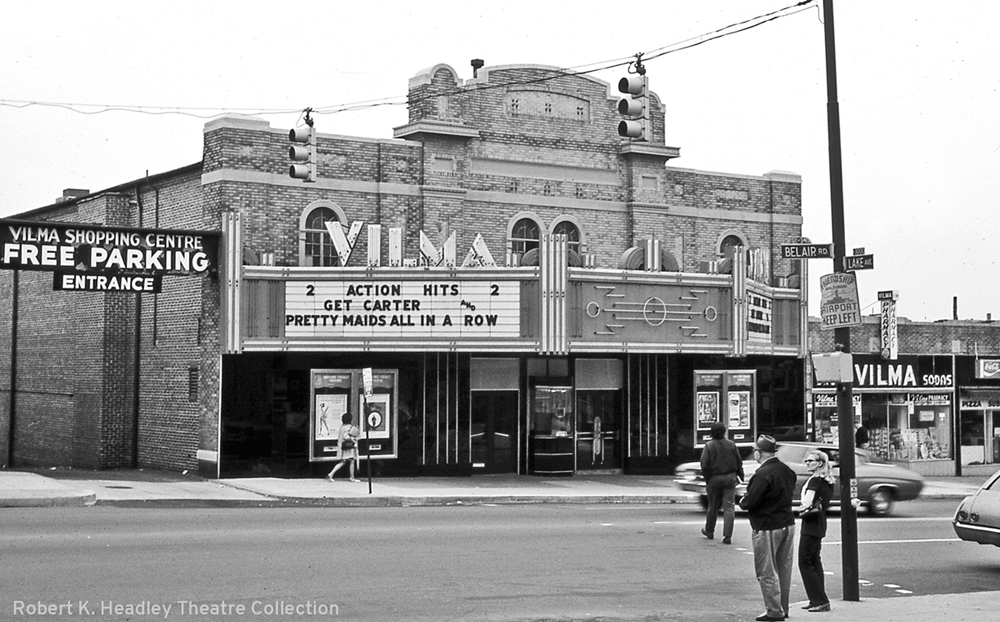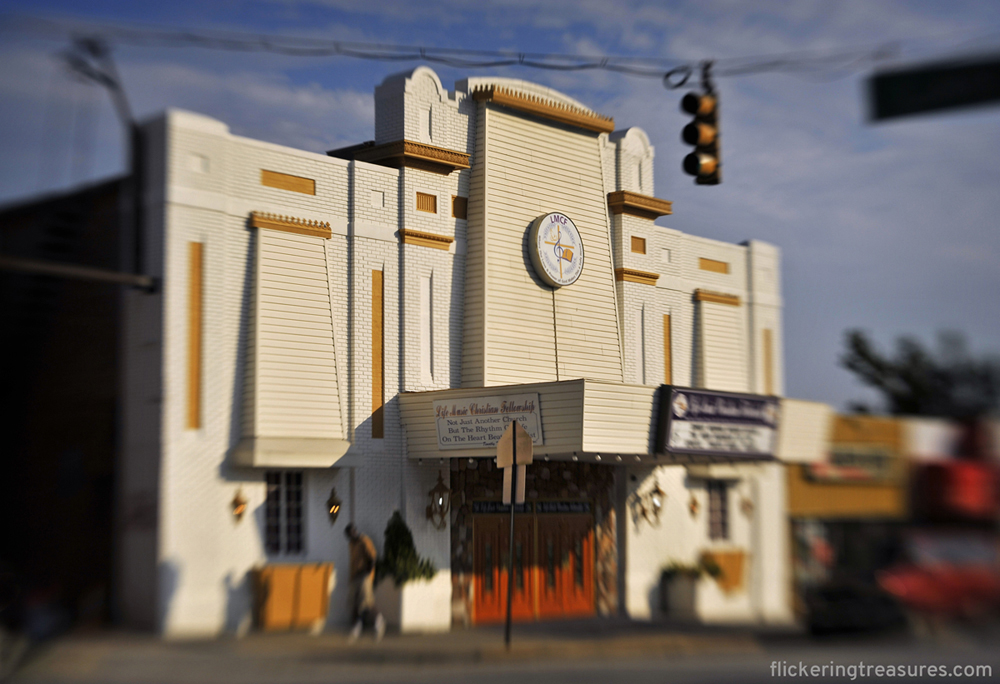Vilma
3403 Belair Road
The Belair-Edison neighborhood grew rapidly in the decade before the Vilma was built in 1928. Streetcars and automobiles traversing Route 1 (Belair Road) brought development to an area of truck farms. Irish, German, and Eastern European families settled into the spanking new porch front rowhouses that spread north from Sinclair Lane.
John F. Eyring Sr. designed and built the 900-seat Vilma for the Gaertner brothers. The façade of the Vilma resembled another Gaertner theater, the Strand in Dundalk, which had opened the previous year. The $125,000 brick building was done in the prevailing Spanish Mission style. A large sloping lobby led down to an auditorium decorated with Greek statues. On the dark stage curtain were depictions of two praying female figures. In the 1950s, a child’s ticket cost 25 cents, but a 12-year old could apply for a 35-cent junior courtesy card to avoid the higher adult price.

The unusual name for the theater probably came from the fetching Hungarian film star, Vilma Banky. The name also graced the pharmacy next door, as well as the nearby Vilma Bakery and Vilma bowling lanes. The adjacent A&P offered easy parking. After the theater closed in 1973, the interior was ripped out for the La Fontaine Rouge banquet hall. Since the late 1990s, the former movie house has been the home of the non-denominational Life Music Christian Fellowship church.
Mary Orth of Parkville recalled a milk bottle cap promotion at the Vilma: “If you had 25 caps you’d get in for nothing.” Mary didn’t know one only needed the cardboard insert, not the whole cap. On a date with her future husband, Jack Orth, they discovered this, to their embarrassment, when they got to the cashier’s window. The long line behind them grew even longer as they had to pop the little cardboard discs out of each milk cap.

The Vilma seemed like the proverbial girl next door, pretty but a tad ordinary. Late in life, she got a makeover for her new identity as a banquet facility. The façade, sheathed in siding with new decorative embellishments, provided our girl with a fresh wardrobe. It’s as if Miss Vilma shed her tweedy brick coat to step out in an ivory ball gown with puffed sleeves of vinyl siding and a golden tiara of ornamental roof trim.